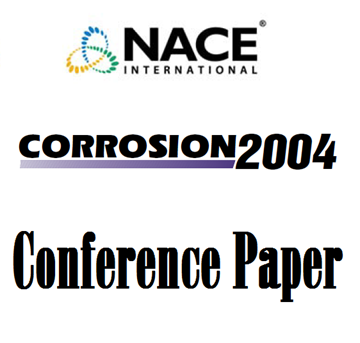Search
Products tagged with 'high temperature'
View as
Sort by
Display
per page
02386 A NEW CARBURIZATION RESISTANT ALLOY FOR ETHYLENE PYROLYSIS FURNACE TUBES
Product Number:
51300-02386-SG
ISBN:
02386 2002 CP
Publication Date:
2002
$20.00
04528 High Temperature Electrochemical Corrosion Rate Probes for Combustion Environments
Product Number:
51300-04528-SG
ISBN:
04528 2004 CP
Publication Date:
2005
$20.00
11032 New Development of a High Tg FBE Coating
Product Number:
51300-11032-SG
ISBN:
2011 11032 CP
Publication Date:
2011
$20.00
51317--9780-Development of Test Methods and Factors for Evaluation of Oilfield Corrosion Inhibitors at High Temp
Product Number:
51317--9780-SG
ISBN:
9780 2017 CP
Publication Date:
2017
$20.00
51318-10877-High Temperature Alloys Failures in the Petrochemical Furnaces. Mitigation and Prevention
Product Number:
51318-10877-SG
Publication Date:
2018
$20.00
51318-11027-Formation Mechanisms of Iron Oxide and Iron Sulfide at High Temperature in H2S Corrosion Environment
Product Number:
51318-11027-SG
Publication Date:
2018
$20.00
51318-11191-Behavior of High-Temperature Materials in Sulphur-Containing Steam Cracking Conditions
Product Number:
51318-11191-SG
Publication Date:
2018
$20.00
51318-11266-Sour Gas Plant Corrosion in the Presence of Elemental Sulfur
Product Number:
51318-11266-SG
Publication Date:
2018
$20.00
51318-11268-Room Temperature Gas Charging to Achieve Test Pressures at Temperature
Product Number:
51318-11268-SG
Publication Date:
2018
$20.00
51318-11303-NaCl and CaCl2-Induced High Temperature Corrosion of Automotive Exhaust Components
Product Number:
51318-11303-SG
Publication Date:
2018
$20.00
51318-11386-Study on the Corrosion Performance of C110 Tubing in Formate Completion Fluid at High Temperature
Product Number:
51318-11386-SG
Publication Date:
2018
$20.00
51318-11509-Assessment of materials compatibility with high density Brines for completion fluid of HPHT wells
Product Number:
51318-11509-SG
Publication Date:
2018
$20.00












